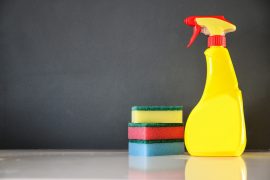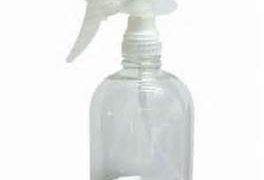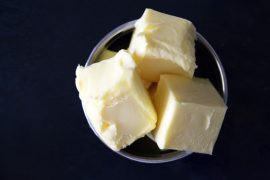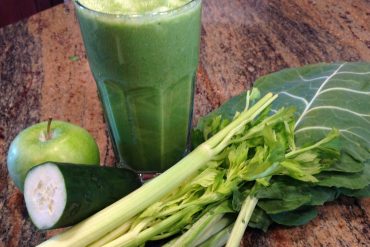If you have switched from a top-loading washing machine to a front-loading one, you probably love so many things about it. These energy-saving, water-miserly beauties are easy to access because of the front door, and they treat your clothes more gingerly because they do not have a central agitator.1
But for all of their benefits, these machines can be tricky. They are difficult to keep clean and free of mold and mildew, as well as hard to mechanically maintain. Let this guide help you keep your machine in tip-top shape.
Critical Ways Your Front-Loader Differs From Top-Loaders
Your front-loading washing machine is not simply a top-loader tipped on its side; it works on completely different principles. Its horizontal axis lifts clothes up and then drops them into the water, instead of violently churning them around a central agitator. They also have accelerated spin cycles, reducing your overall washing time and saving energy because clothes spend less time in the dryer.2
Sealed, Watertight Doors: The greatest difference is that front-loaders have a door designed to prevent water from leaking out. Much like a ship’s porthole, this door is the last line of defense between your laundry room and a flooded floor. This door’s ability to prevent water leakage is only as good as its seal.
High-Velocity Drain Pumps: Another difference is that front-loading machines have drain pumps that cannot be ignored. While all washing machines do have drain pumps, front-loaders depend on high-velocity pumps to expel all traces of water before the door is opened. Maintaining the drain pump and filter is key to keeping your machine in perfect shape.
Operate Your Machine the Right Way
So, you have been using a washing machine for years. Obviously, you know how to use one, right?
Many of the basics will translate to front-loaders, such as separating white and light colors from dark and non-colorfast colors. However, front-loading machines are less forgiving than top-loaders in these aspects:
- Spin Cycle: Run a spin cycle that is right for the load. Too-fast cycles create vibration, which can damage your machine’s inner workings.
- Overloading: If your tendency is to max out your loads, curb this urge with your front-loader. Large items should comprise no more than half of your load. Super-size items such as bedspreads and blankets should be washed individually. Even though the machine can be fully loaded, the items should not be tightly packed.3
- Amount of Detergent: Because front-loaders use less water, they require less detergent, too. If your tendency with top-loading machines is to dollop out any amount that looks good, you absolutely need to change your habits. Adding too much detergent to front-loading machines means more than just soapy clothes, post-rinse; it can overflow your washer and compromise its electronic system.
10 Ways to Keep Your Machine Sparkling Clean, Fresh, and Free of Mold and Mildew
Front-loading washing machines are notorious for creating environments that harbor mold and mildew. These nine rules help keep it clean:
Use Your Vent Latch: Were you even aware that your machine has a vent latch? Standard now with many front-loaders, a vent latch allows you to leave the door open a few inches when not in use, yet keep the door secured to the machine. This lets the machine air out, while keeping children and pets from crawling in.
Alternatively, Keep Door Open: If your machine does not have a vent latch, keep the door open 3-4 inches when not in use to promote ventilation. Manufacturers stress that homes with kids and pets should not do this for safety reasons.
Only Use HE Detergent: Owners of top-loading machines can get by with purchasing any kind of detergent. But owners of front-loaders must buy only high-efficiency (HE) detergent, indicated by the universal “HE” symbol on the container. These low-sudsing detergents do a remarkably good job of spreading in low-water environments. Regular detergents are so detrimental in front-loaders because not enough water is dispersed to clear out all of the suds and dirt, both breeders of mold and mildew.4
Use Less Product: With both detergent and softeners, less product is needed for front-loading machines. You negate the effect of HE detergents when you increase their quantities. Thus, more product remains on the clothing, which helps create mold and mildew.
Remove Washed Clothes Quickly: With any machine, front- or top-loading, it is never a good idea to let clothes sit for very long after washing. But even a closed top-loading machine has some ventilation; front-loaders have zero ventilation. This drastically reduces the amount of time that washed clothes can remain in the machine.5
Clean Door Seal: The door seal (or gasket) is efficient at preventing water and clothes from escaping your machine. Unfortunately, it is also efficient at trapping in moisture. After every wash, wipe the seal dry with large, thick rags or towels. After every few washes, wipe down the seal with a rag or towel sprayed down with mildew cleaner or hot, soapy water. Then, wipe dry with a separate dry rag or towel.6
Clear Drain Pump Filter: Every front-loading machine will have a drain pump filter, typically located near the bottom of the machine. Consult manufacturer instructions for the location, as well as how to access the filter door. Clear this filter after every few washings.7
Clean Dispenser Drawers: Occasionally remove the product dispenser drawers and thoroughly wipe them down with warm water and a clean cloth. Do not use any cleaning products – only water. Also, running the drawers through a dishwasher is not recommended, as the heat may melt the plastic drawers.
Run a Cleaning Solution: First, run a complete cycle with no clothes and no detergent. Then, run another cycle using any one of the following: 1 cup bleach, 1 cup baking soda, 1/2 cup of Cascade Complete, or a specialized washer cleaner.8
Wipe Down Tub: After you have run your cleaning solution, use a large, clean, absorbent towel to wipe down and remove all moisture from the tub. If you can get in the habit of doing this, you will benefit by having cleaner clothing, as well as a mold- and mildew-free machine.
Troubleshooting: Making Light Repairs to Your Machine
Problem: Machine will not drain or door will not open.
Solution: Front-loading machines are designed to not open unless all of the water is emptied. So, if it will not open, chances are good that it is because some water remains. Manually activate the “Drain/Spin” cycle. Check for a clogged drain filter. Water inlet filters, located in back where the supply hoses connect to the machine, may be clogged. Remove the filters, soak in lime scale remover or white vinegar, rinse, and replace.9
Problem: Machine will not turn on.
Solution: Check for a tripped electrical circuit breaker, faulty door latch, or computer error codes.
Because they operate differently from top-loading machines, front-loading washing machines require regular maintenance and cleaning to perform properly and remain clean and free of mold and mildew.
Sources:
- http://www.consumerreports.org/cro/news/2015/04/washing-machines-that-save-water-and-money/index.htm
- https://www.energystar.gov/index.cfm?c=clotheswash.pr_front_top
- http://www.kenmore.com/kenmore-3.9-cu-ft-front-load-washer-white/p-02641122000P?prdNo=1&blockNo=1&blockType=G1
- http://laundry.about.com/od/ecofriendlylaundry/a/HEdetergent.htm
- http://naturallybubbly.com/how-to-clean-a-front-loading-washing-machine
- http://www.todayshomeowner.com/how-to-remove-mold-and-mildew-from-front-load-washing-machines/
- http://products.geappliances.com/appliance/gea-support-search-content?contentId=16687
- http://www.todayshomeowner.com/how-to-remove-mold-and-mildew-from-front-load-washing-machines/
- http://www.lg.com/us/support/answers/front-control-top-load-turbowashers2014/caring-for-your-washer
This article is reprinted with permission from Fix.com
 About the Author:
About the Author:
Lia Leendertz is an award winning garden writer based in the UK. She is a regular writer for The Guardian and The Telegraph and for most of the major gardening magazines. She has a town garden and an allotment in Bristol, England and loves growing flowers, vegetables and fruit.











